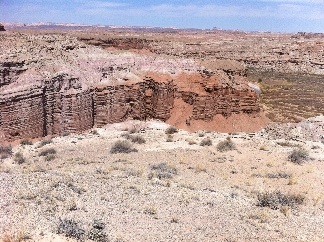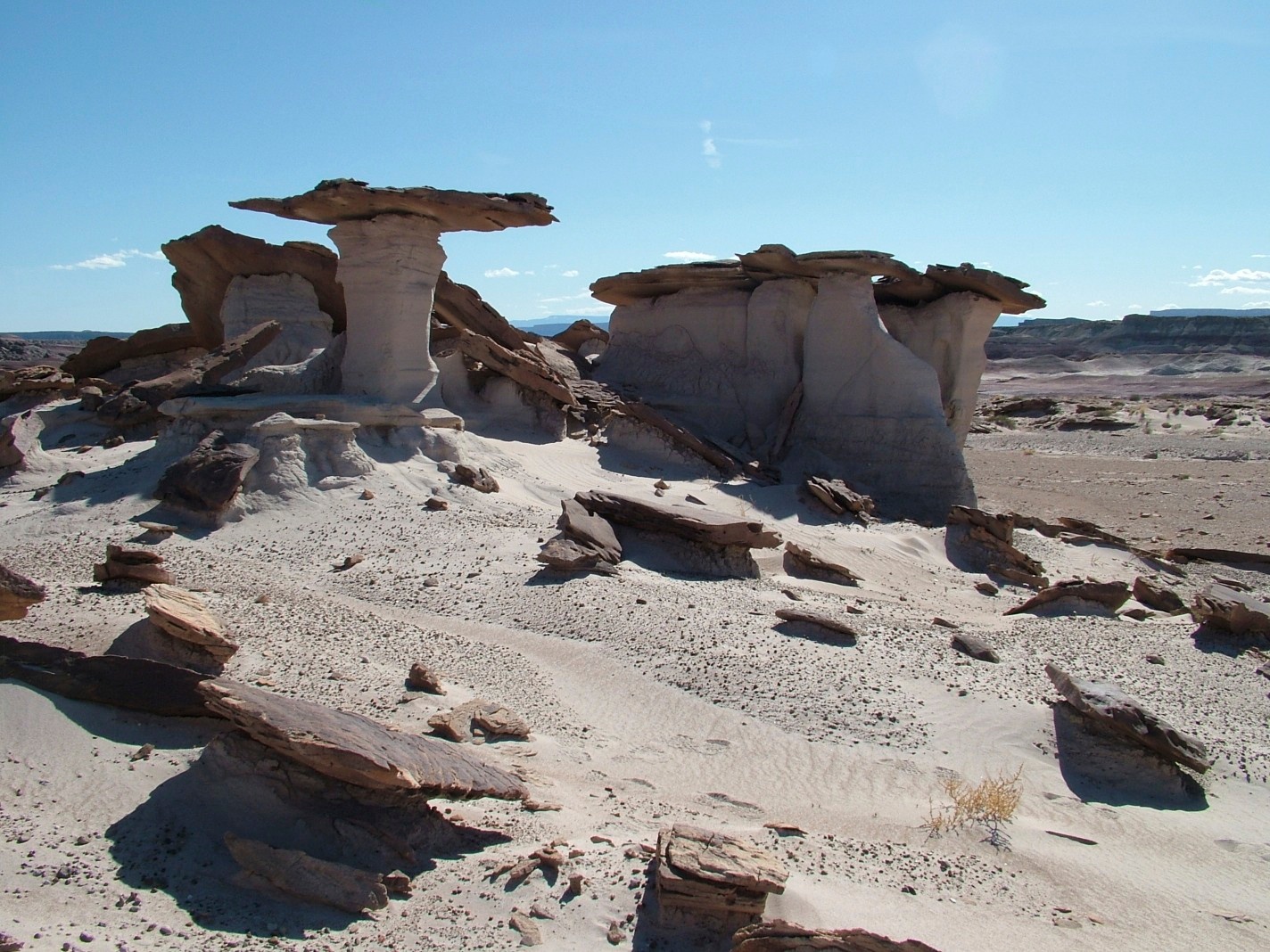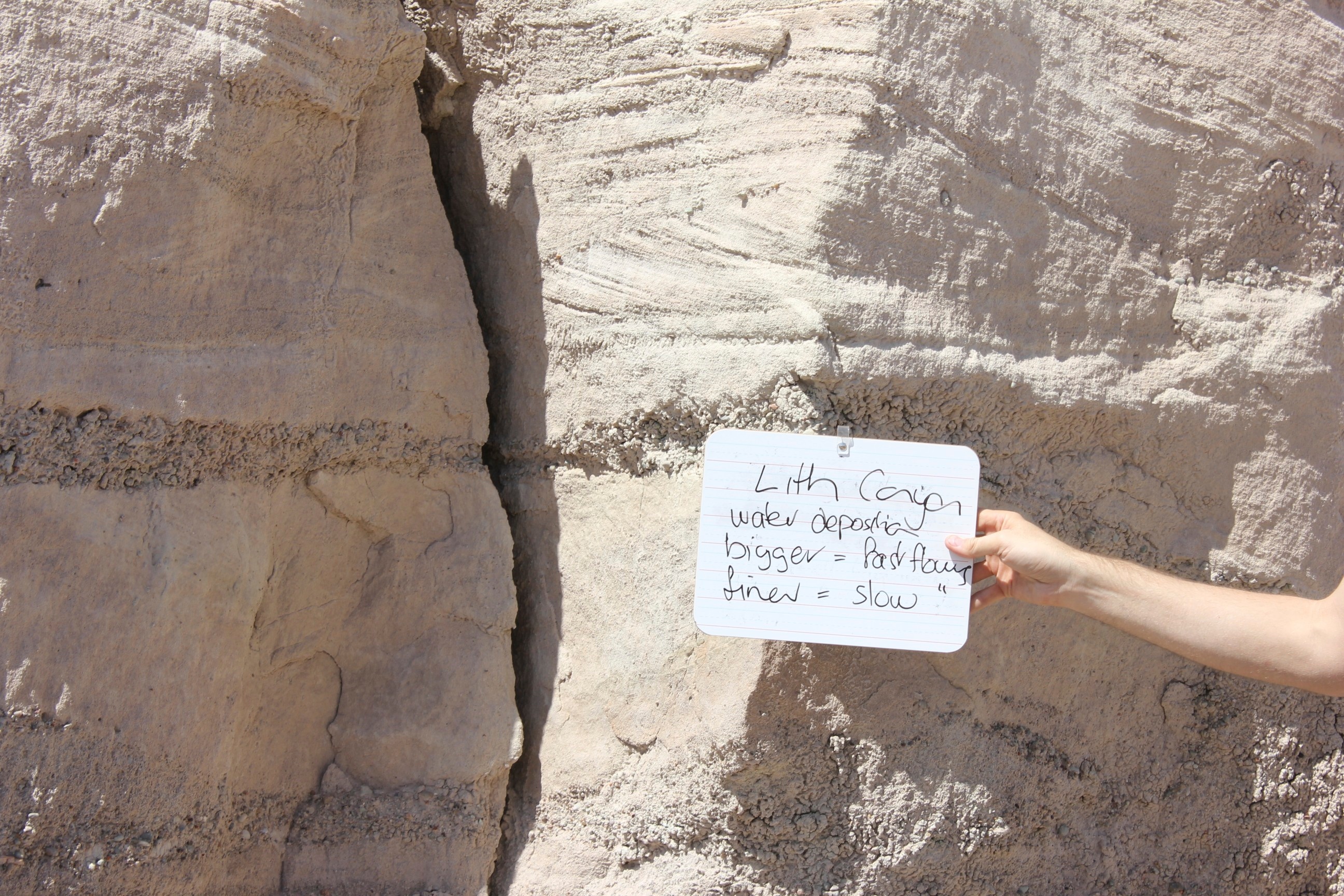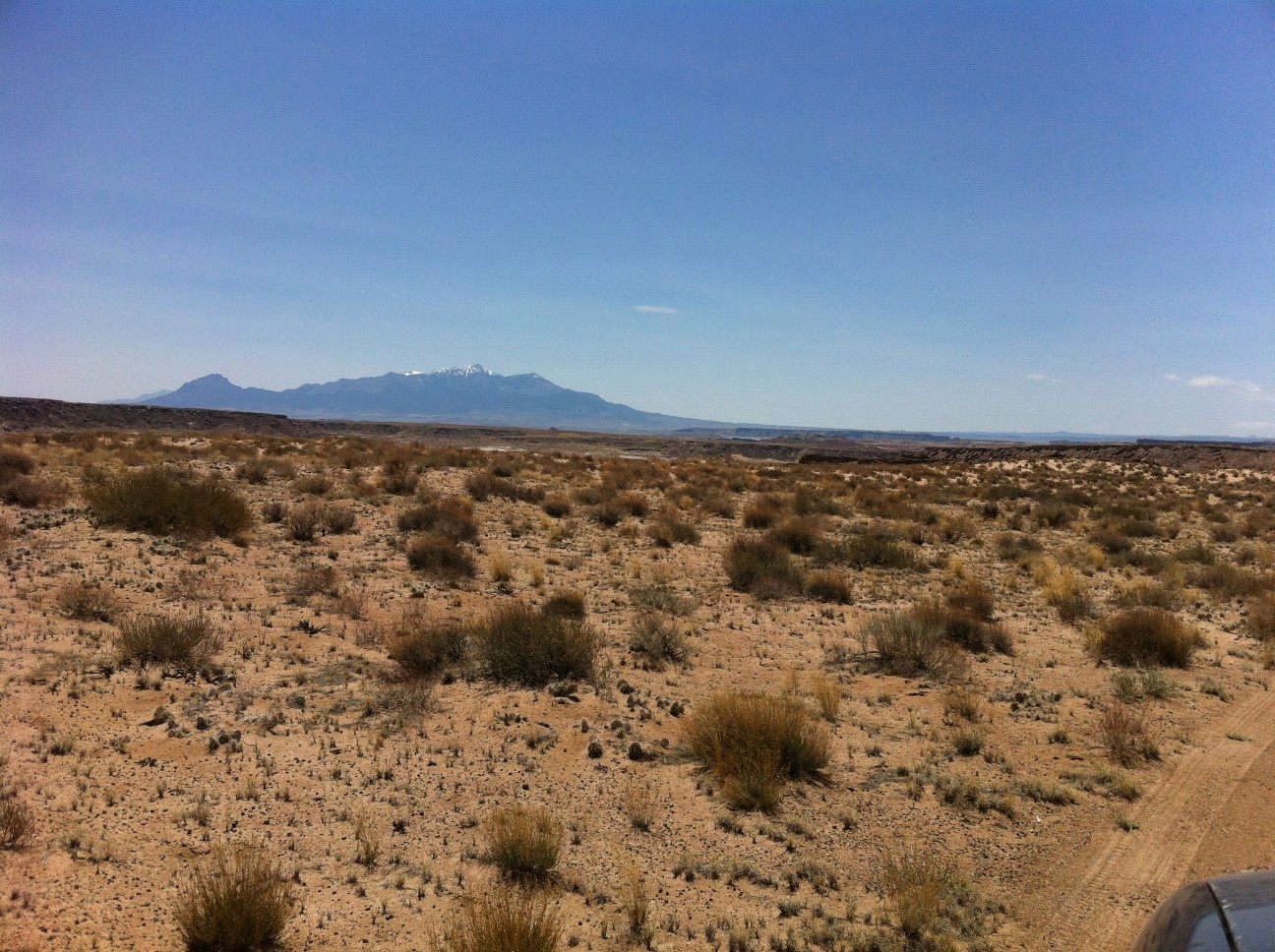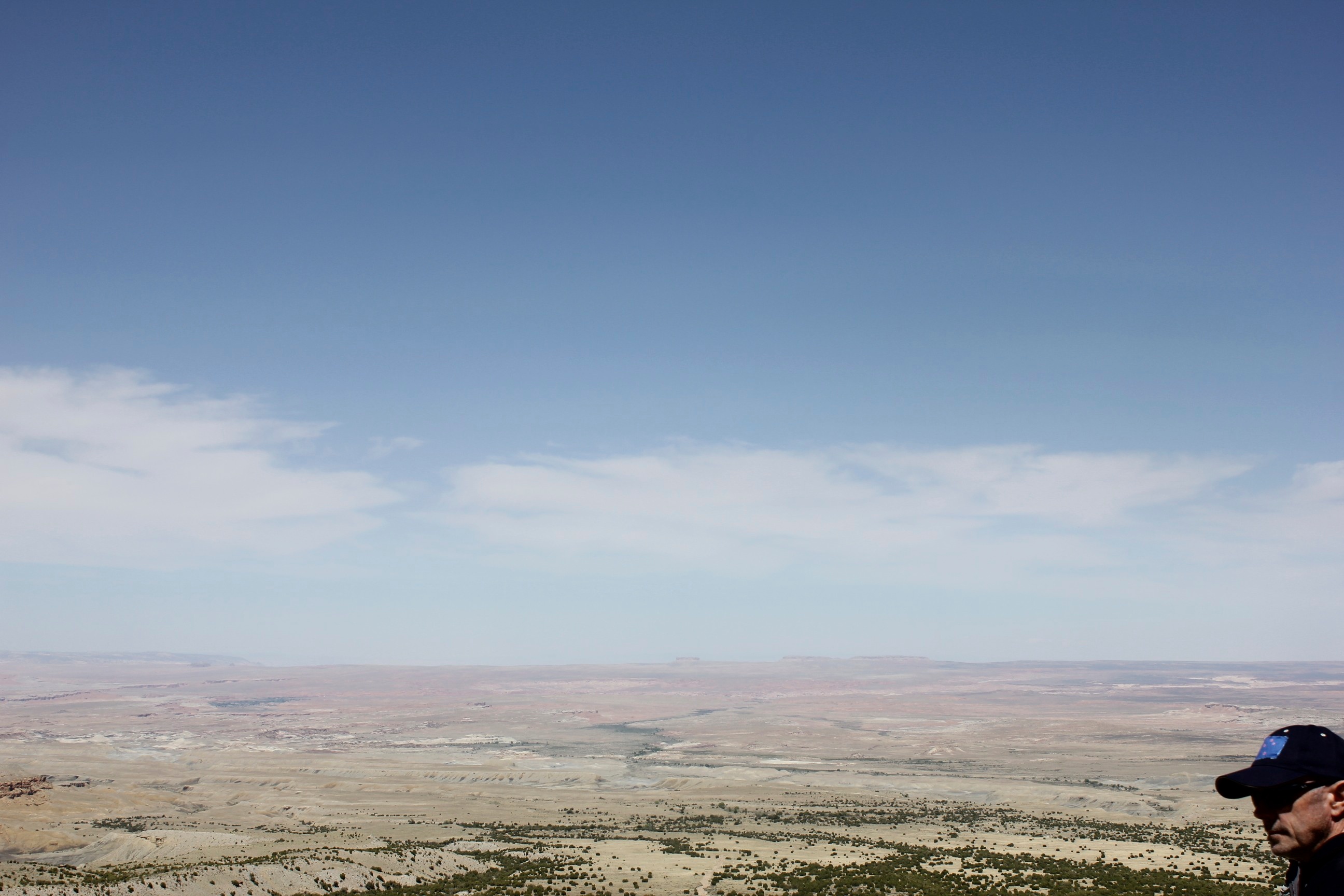Date and time: 28 April 2012
Written by: Mike Bodnar, Crew 118, First Officer
We can now all tell the difference between Morrison
and Summerville formations,
we know a capstone when we see one,
and it is very obvious (when you know) why some of the sedimentary layers are tilted rather than straight.
This is all thanks to a visit to the Hab by Jon Rask of NASA Ames. Jon has come out here to recover some remote field sensors, but took the opportunity to host us on a day-long field trip to nearby locations and enlighten us on the geology and geography of the surrounding landscape.
Here in the Utah desert there are plenty of purple-reddish features whose horizontal sedimentary layers tend to be quite widely separated. And then there are others, usually dark reddish brown in colour where the sedimentary layers are tightly packed together, rather like a stack of pancakes. The former are Morrison, the pancake stacks are Summerville. Now you know.
But since sedimentary layers are laid down generally by water deposit or volcanic activity, you would think they would settle reasonably straight. Water after all is governed by gravity, so should always settle level. Why then do some sedimentary layers tilt? Whoever heard of sloping water?
Well, according to Jon, it's not that they didn't settle level - they almost certainly did - but the entire formation has subsequently been tilted by tectonic activity. Essentially the land has been lifted, and along with it, the layers.
Locally we can blame the igneous activity of the Henry Mountains for doing this, as they heaved and squirmed their way up over aeons, pushing the sedimentary layers aside, tilting some, annihilating others, to finally stand magnificently above all else and provide a glorious southern backdrop when viewed from the Hab.
Standing on the lower slopes of the Henries today we could finally appreciate what drama the land has gone through over millions and millions of years, and how it has been shaped and formed into the fascinating environment it is today.
The intense age of everything around us is also a humbling reminder of how little time we as humans have been here. Geologically speaking, hardly the blink of an eye, but long enough at least to begin to understand the land we stand on.
ENDS.

